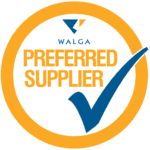Enhancing Urban Mobility: Integrating Public Transportation with Traffic Management
As urbanisation continues to shape the landscape of Western Australia, we at Corsign understand that the demand for efficient and sustainable transportation solutions becomes increasingly pressing. So, what are the solutions? One key aspect of addressing this challenge is the integration of public transportation with advanced traffic management systems.
Imperative Integration
As the population grows and urban centres expand, the need for efficient, sustainable transportation plans becomes even more urgent.
By combining the two elements of traffic management systems and public transportation, cities can create a comprehensive and interconnected transportation network that not only eases traffic congestion but also promotes environmental sustainability and enhances overall urban mobility.
The Current Transportation Scenario
Western Australia is faced with the familiar issues of urban sprawl and escalating traffic congestion. As the population swells so does the reliance on private vehicles. This leads to gridlocks and extended commute times during peak hours. To confront these challenges, it is vital to explore innovative solutions that not only prioritise public transportation but also leverage technology to manage traffic flow more effectively.
The increasing availability of data and advancements in technology offer unprecedented opportunities to create an interconnected transportation network. By integrating public transportation with sophisticated traffic management systems, Western Australia can embark on a transformative journey toward a more sustainable and efficient urban mobility model.
The Benefits of Integration
- Reduced Congestion: Integrating public transportation with traffic management allows for real-time monitoring and optimisation of traffic flow. By employing predictive analytics and synchronising traffic signals, authorities can identify congestion hotspots and implement measures to alleviate traffic jams. This not only improves the overall commute for public transit users but also enhances the experience for private vehicle owners.
- Enhanced Public Transit Efficiency: Public transportation systems stand to gain significantly from integration. Real-time data on traffic conditions can be leveraged to adjust bus and train schedules, reducing waiting times and increasing the reliability of public transit services. This, in turn, makes public transportation a more attractive option for commuters.
- Environmental Sustainability: A well-integrated transportation system encourages a shift from private vehicles to public transit options, contributing to a reduction in the overall carbon footprint. This move towards sustainable transportation aligns with global efforts to combat climate change as well as creating g a more eco-friendly urban environment.
- Smart Infrastructure Investments: Integrating public transportation with traffic management allows for strategic infrastructure investments. By identifying key areas with high transportation demand, authorities can allocate resources efficiently, whether it be in expanding public transit options, improving road infrastructure, or implementing smart traffic management solutions.
Case Studies
- Singapore: Singapore’s Intelligent Transport System (ITS) is a perfect example of seamless integration. The city-state employs a comprehensive network of sensors and cameras to monitor traffic conditions, adjusting traffic signals in real time. This, combined with an efficient public transportation system, has significantly reduced congestion and enhanced overall mobility.
- London, United Kingdom: London’s public transportation system is intricately linked with advanced traffic management technologies. The use of contactless payment systems, real-time tracking, and synchronised traffic signals contributes to a well-coordinated and efficient urban transportation network.
These case studies underscore the importance of a holistic approach to urban mobility, emphasising the symbiotic relationship between public transportation and traffic management.
Recommendations for Western Australia
By investing in new traffic management initiatives, Western Australia can create a sustainable, efficient, and interconnected transportation network that meets the evolving needs of its growing population.
Invest in Smart Traffic Management Systems
- Real-Time Data Integration: To support Western Australia in achieving advanced transportation, substantial investment in state-of-the-art traffic management systems is vital. These systems should go beyond conventional traffic monitoring and incorporate advanced technologies for real-time data integration. This includes deploying sensors, cameras, and other IoT devices across key traffic arteries to capture dynamic information on congestion, road conditions, and traffic patterns.
- Predictive Analytics and Machine Learning: Seamless integration with public transportation networks requires the incorporation of predictive analytics and machine learning algorithms. These technologies can analyse historical data to anticipate traffic trends and patterns, allowing for proactive traffic management. By predicting potential congestion points and dynamically adjusting traffic signals, the system can optimise traffic flow in real-time, mitigating bottlenecks and reducing overall commute times.
- Adaptive Traffic Signal Control: Investment should also focus on adaptive traffic signal control systems. These intelligent systems use real-time data to adjust signal timings based on current traffic conditions. By adjusting to the ebb and flow of traffic, adaptive signal control enhances intersection efficiency, reducing wait times for both motorists and public transit users.
- Connectivity with Public Transportation Systems: For a truly holistic approach, smart traffic management systems must seamlessly integrate with public transportation networks. Such integration allows for the prioritisation of public transit vehicles at intersections, optimising the efficiency of bus and train schedules.
- Infrastructure Upgrades: Investment should extend to infrastructure upgrades that facilitate data transmission and communication between traffic management systems and public transportation networks. Robust communication infrastructure, such as dedicated lanes for public transit, can enhance the efficiency of data exchange, ensuring that real-time information is utilised effectively to manage urban mobility.
Promote Multi-Modal Transportation
- Seamless Connectivity: Promoting a move to using various types of transport means we need to make sure that different ways of getting around are well connected. Implementing integrated ticketing systems that cover buses, trains, and cycling services simplifies the commuting experience for residents. A single ticket should provide access to various modes of transportation, promoting convenience and affordability.
- Intermodal Hubs: The creation of intermodal hubs acts as a physical manifestation of integrated transportation. These hubs serve as centralised points where various modes of transit converge, allowing for easy transfers between buses, trains, and cycling routes. Investing in the development of intermodal hubs enhances accessibility and encourages the use of different transportation modes within a single journey.
- Last-Mile Connectivity: To address the “last-mile” challenge, where commuters face difficulties reaching their final destination from transit stops, Western Australia should invest in last-mile connectivity solutions. This includes supporting initiatives such as bike-sharing programs and creating pedestrian-friendly pathways to enhance accessibility and connectivity between transit stops and final destinations.
- Public Participation Programs: Promoting multi-modal transportation requires active engagement with the community. Conducting surveys and seeking public input can provide valuable insights into commuter preferences and help tailor transportation solutions to meet the diverse needs of the population. Public participation programs also foster a sense of ownership and collaboration in shaping the transportation landscape.
Public Awareness Campaigns
- Comprehensive Education: Public awareness campaigns should go beyond simple advertising and delve into comprehensive education about the benefits of integrated transportation systems. Informing residents about the positive impact on individual commute times, the environment, and the overall liveability of urban spaces is crucial. This education should extend to the economic and health benefits of reduced traffic congestion and increased use of sustainable transportation options.
- Case Studies and Success Stories: Highlighting case studies and success stories from other cities that have successfully implemented integrated transportation systems can be a powerful tool. Showcasing tangible improvements in traffic flow, reduced congestion, and enhanced public transit experiences reinforces the potential positive outcomes for Western Australia.
- Community Engagement Events: Organising community engagement events, such as town hall meetings and interactive exhibitions, provides platforms for direct communication between authorities and residents. These events offer opportunities to address concerns, gather feedback, and build a sense of community involvement in the planning and execution of integrated transportation initiatives.
What Does the Future Hold for Transportation?
The likelihood of Western Australia integrating public transportation with traffic management depends on various factors:
- Government policies and initiatives play a crucial role in shaping the transportation landscape. If the government of Western Australia recognises the importance of reducing congestion, improving public transportation efficiency, and creating a sustainable urban environment, there is a higher likelihood of investing in integrated solutions.
- Public awareness and demand for improved transportation options can influence government decisions. If residents of Western Australia express a desire for integrated and efficient public transportation, policymakers may be more inclined to invest in solutions that address these demands
- Collaboration with technology providers and private sector entities can accelerate the implementation of integrated transportation solutions. Public-private partnerships and collaborations with innovative companies can bring expertise and resources to the table.
- Concerns about environmental sustainability and the impact of transportation on air quality and climate change can also drive a shift towards integrated, eco-friendly transportation solutions. Governments may be motivated to invest in initiatives that promote public transit use and reduce the overall carbon footprint.
Ultimately, it’s important to note that the actual implementation may depend on the commitment of government officials, the availability of funding, and the ability to address potential challenges such as infrastructure upgrades, public acceptance, and system interoperability.
Until such ideas are realised, it remains important for Corsign to do what we can to improve the current state of our roads. If you want to positively influence driver behaviour and promote traffic safety and efficiency, we are here to help. As dedicated sign specialists, we are on hand to cater to all your product and service needs. Contact us today for more information or to request a quote.




